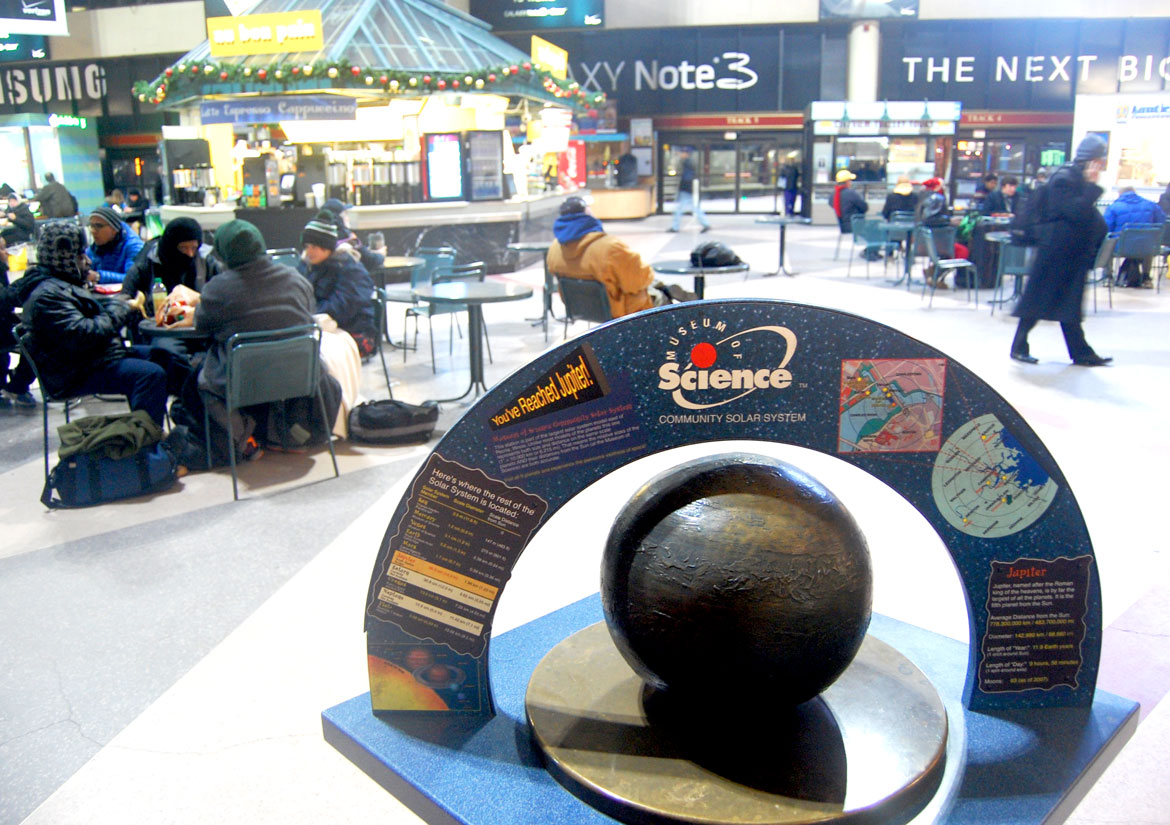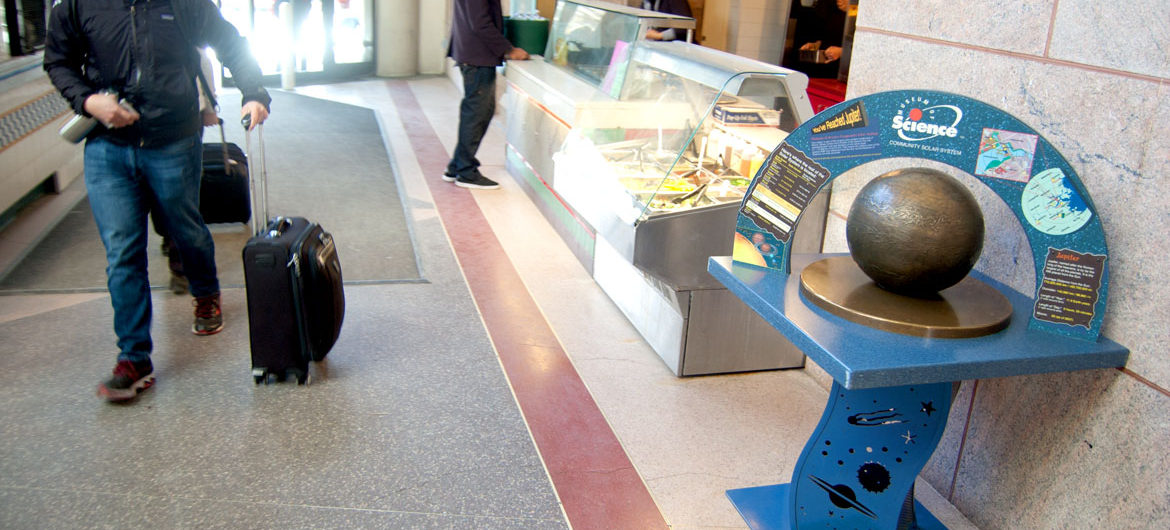Some weeks back I found myself struggling to phrase what suddenly seemed like a delicate question: Have you seen Uranus?
Actually, I didn’t get a chance to ask the question because the woman who answered the phone at the Jamaica Plain branch of the Boston Public Library declined to answer any questions from a reporter. She referred me instead to the library system’s public relations department.
So I emailed the question instead: Have you seen Uranus?
Uranus was part of one of my favorite public artworks in the region: The “Community Solar System” from Boston’s Museum of Science. It was the “largest solar system model east of Peoria, Illinois,” signs explained. “Unlike most models of the planets this one represents both size and distance on the same scale (1″ = 10,000 km or 6,215 miles). That means the relative sizes of the planets AND their distances from the Sun (at the Museum of Science) are both accurate. Visit all 9 planets and experience the awesome vastness of space!”
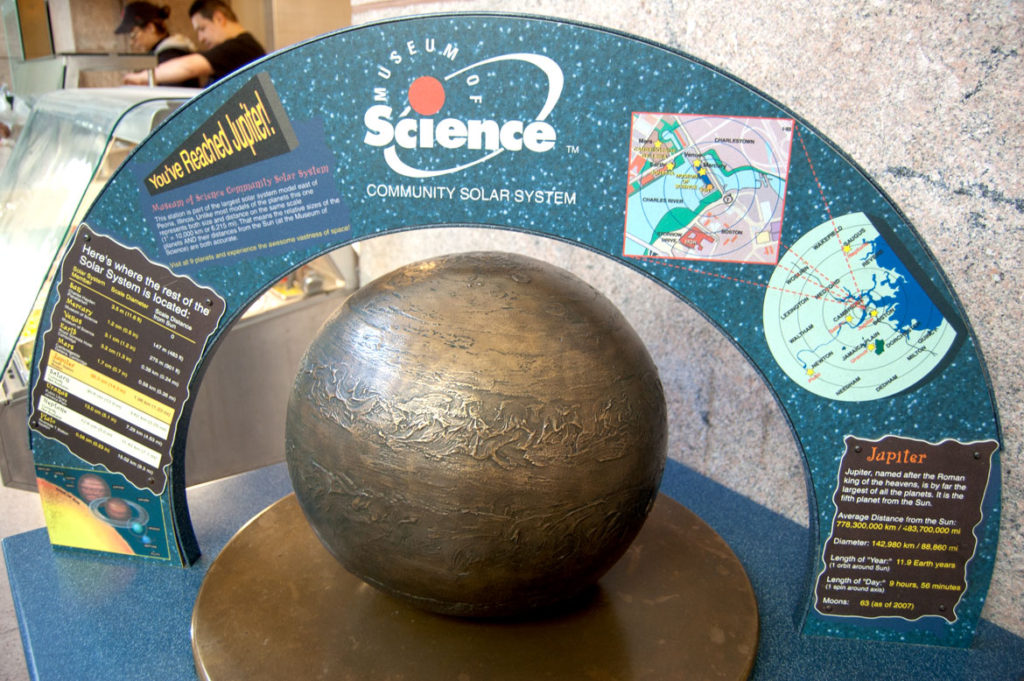
I would read this on the “You’ve Reached Jupiter!” sign on the pedestal of the basketball-sized metal planet model when I’d notice it at Boston’s South Station—in the main waiting room, kind of near the McDonald’s—and dream of visiting all nine planets. In my head, I could begin to feel the awesome vastness of space if this basketball-sized thing, a mile and a quarter from the “Sun,” represented the true scales. Everything is so, so little, separated from each other by vast swaths of emptiness. It was a lonely feeling.
“Exhibit developers Mary Dussault and Deborah Sovinee wanted the scale to be large enough so ‘Pluto was at least the size of a pea,’ but small enough so that the whole solar system was within reach of public transportation,” The Association of Science-Technology Centers reported in 1999. “The resulting model starts with a 3.6 meter fiberglass hemisphere of the Sun in the ‘Welcome to the Universe’ exhibition [at the museum]. The nine planets are cast in bronze from molds sculpted with tactile surface details by museum preparator Richard Sheffield. Supported by laser-cut steel bases, the planets are located in shopping malls, libraries, transit stations, and other public spaces in and around metropolitan Boston.”
“Unfortunately, we are in the process of removing the Community Solar System,” Museum of Science Spokesperson Erin Shannon wrote to me in October 2015. “They were first distributed back in 1997 and what was really special about the project was that they were placed and sized to actual scale of the solar system. Since then however some have needed refurbishments or been moved for renovations at their various homes so we have decided to remove the remaining ones.”
So, with great sadness, I set aside the idea of visiting the “Community Solar System,” kind of forgetting about it for a while. But every now and again I’d bump into Jupiter at South Station. And I’d wonder how many of the other planets were still out there. Which is how I ended up asking around about: Have you seen Uranus?
Help WONDERLAND keep producing our great coverage of local arts, cultures and activism by contributing to Wonderland on Patreon. And sign up for our free, weekly newsletter so that you don’t miss any of our reporting.

The Sun is still there at the museum’s Charles Hayden Planetarium. A map accompanying Jupiter at South Station told me that Mercury and Venus had also been at the Museum of Science. Earth had been at the Royal Sonesta Hotel in Cambridge, a quarter mile away. I called the hotel and the kind person who answered the phone there had no idea what I was talking about.
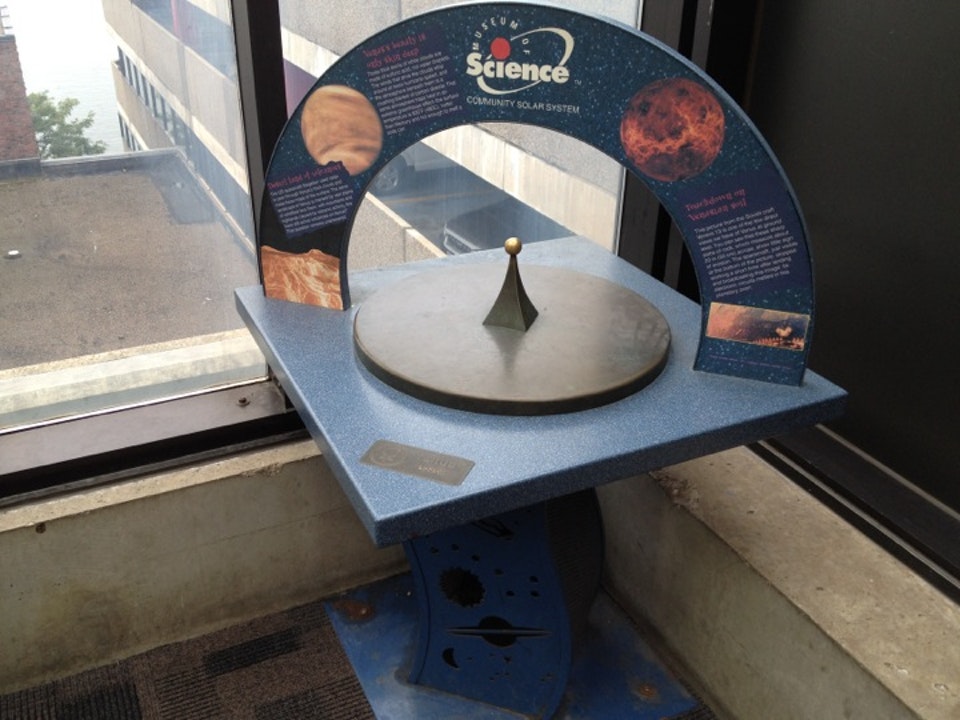
Mars had been at the CambridgeSide mall in Cambridge, 0.36 miles away.
Jupiter is still at South Station, the sign reading: “Jupiter orbits an average distance of 483,7000,000 miles from the sun. Or in this scale model, 1.23 miles from the model Sun at the Museum of Science.”
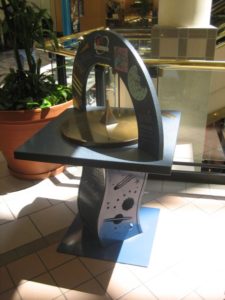
Saturn is “currently not available,” according to the Jupiter sign, but seems to have been at the Cambridge Public Library on Broadway, 2.25 miles away from the Sun. Uranus had been at the Jamaica Plain branch of the Boston Public Library, 4.53 miles away.
“It is not still at the JP branch, unfortunately,” Rosemary Lavery, senior public relations associate for the Boston Public Library, recently emailed in answer to my question. “It was given away before the branch closed for renovations and it is not expected back. JP staff cannot recall who it went to, though perhaps someone affiliated with MOS [Museum of Science] or a school.”
Not long later, she wrote more: “Someone from MOS likely picked it up.”
Neptune is “currently not available,” Jupiter’s sign told me. It seems to have been at the Square One Mall in Saugus, 4.53 miles away from the Sun at the Museum of Science.
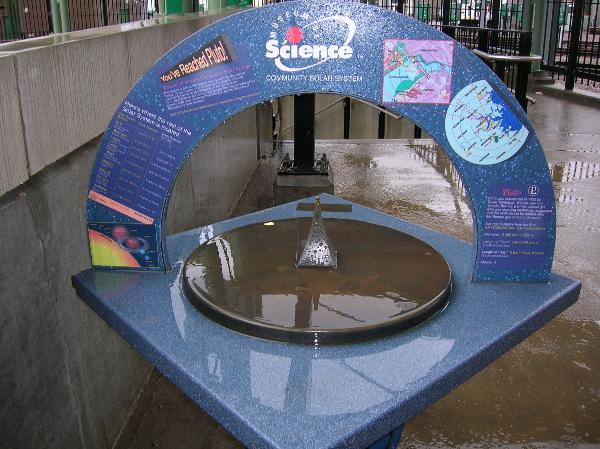
Pluto had been at the Riverside MBTA Station in Newton, 9.3 miles away—even though it had a sign noting: “In August 2006, the International Astronomical Union passed a resolution defining a planet in such a way that Pluto no longer qualifies. As a result, the Solar System now consists of 8 ‘classical’ planets. Pluto now belongs to the newly defined class of objects called ‘dwarf planets.’
Miles of the blog “Miles on the MBTA” reported from his travels all around the transit system that Pluto was still at Riverside in November 2013. (On the train platform, from what I gather.) The Society for the Preservation of Pluto as a Planet seems to have made a pilgrimage to the station to visit it in July 2015. “Sadly, we found that the model is in need of renovation and repair,” they reported on Facebook. “Although the little sphere representing Pluto is intact”—though, curiously, none of the 13 photos they posted seem to show Pluto—“the descriptive placards are faded and weathered, and the base of the model is rusted. Given its location outdoors, this was probably to be expected. Two of the MBTA employees we spoke to were very proud of the model, and one of them even described how he spent all of this past winter cleaning the snow away.”
Has anyone seen Pluto there lately?
